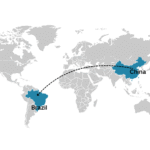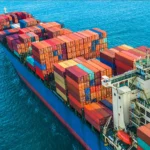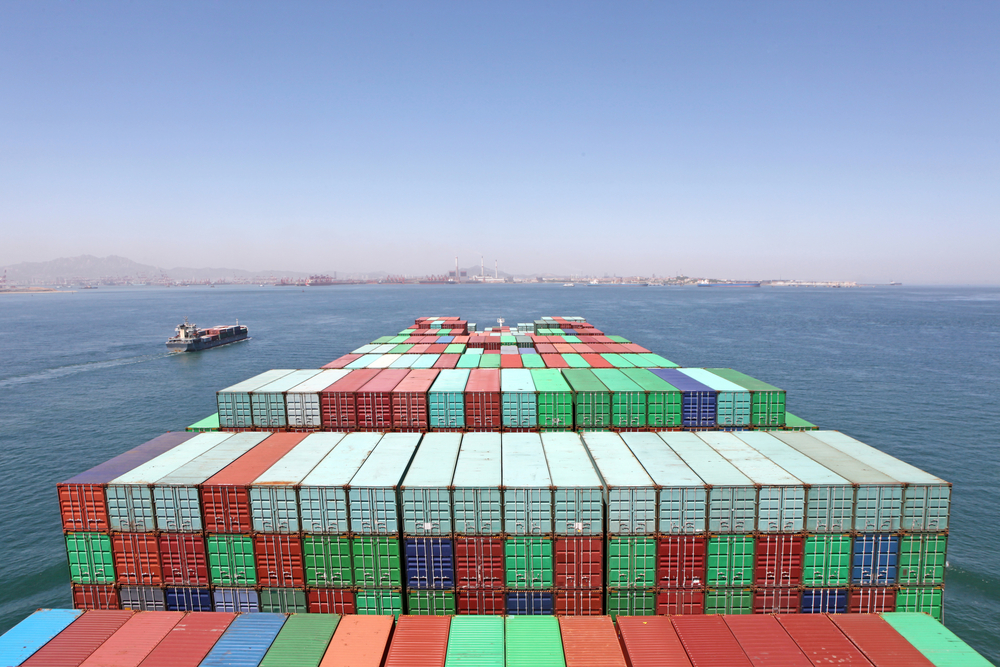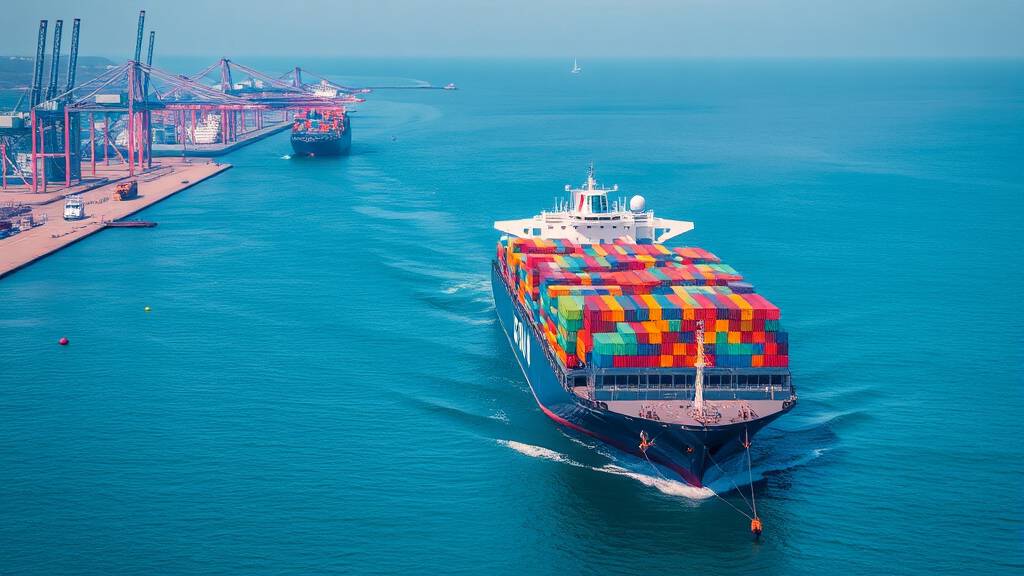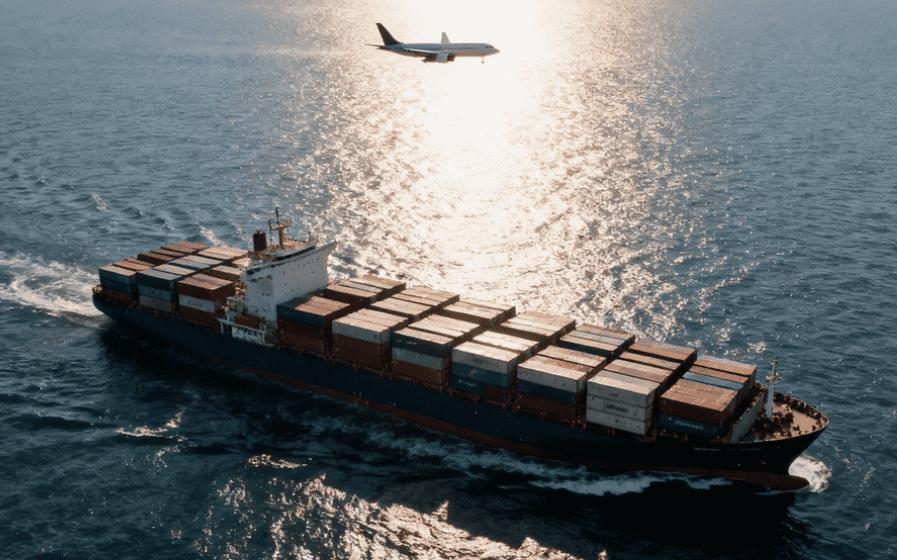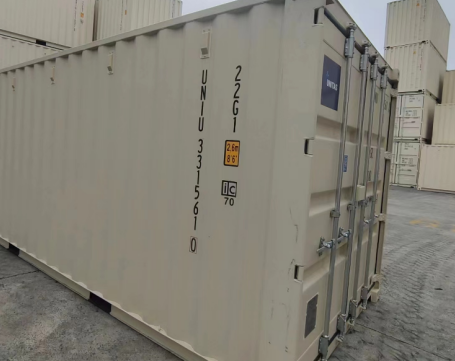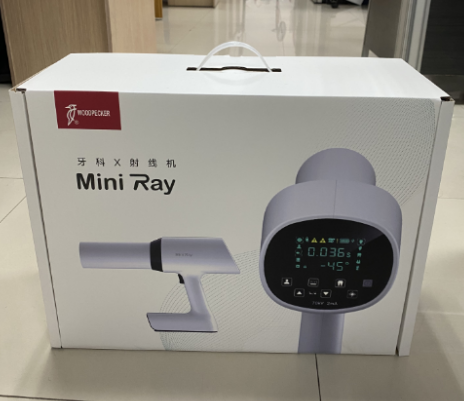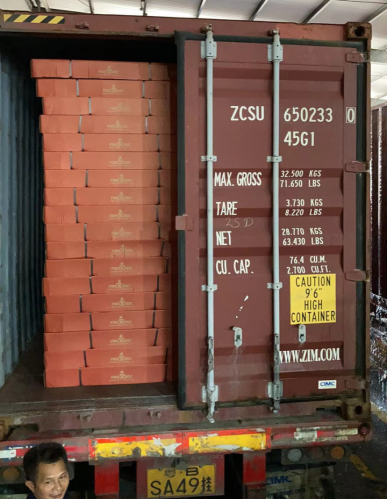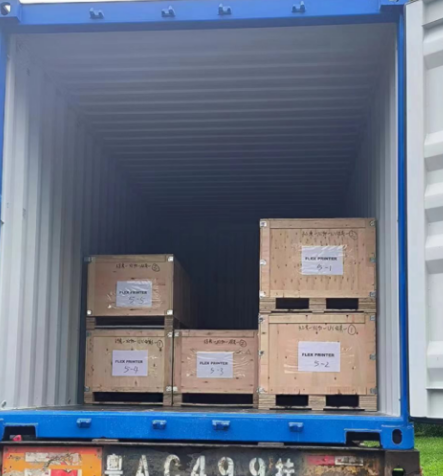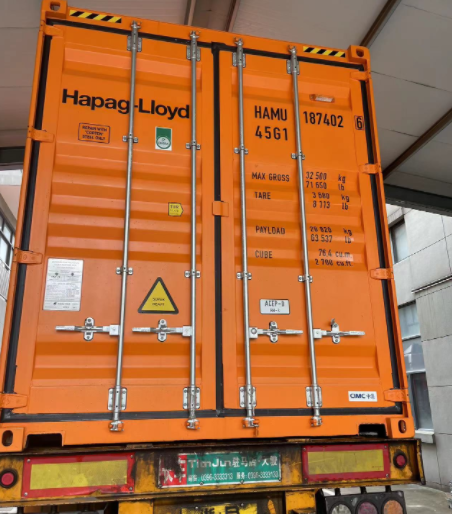Are you curious about the container shipping costs from China to Mexico?
Understanding these expenses is crucial for anyone looking to navigate international trade effectively. In this comprehensive guide, we will delve into the key factors influencing shipping costs, such as shipping routes, container sizes, and modes of transport. Additionally, we’ll break down the costs for both 20ft and 40ft containers, compare FCL and LCL shipping, and provide tips on reducing expenses. Join us as we uncover the intricacies of shipping costs and help you make informed decisions.
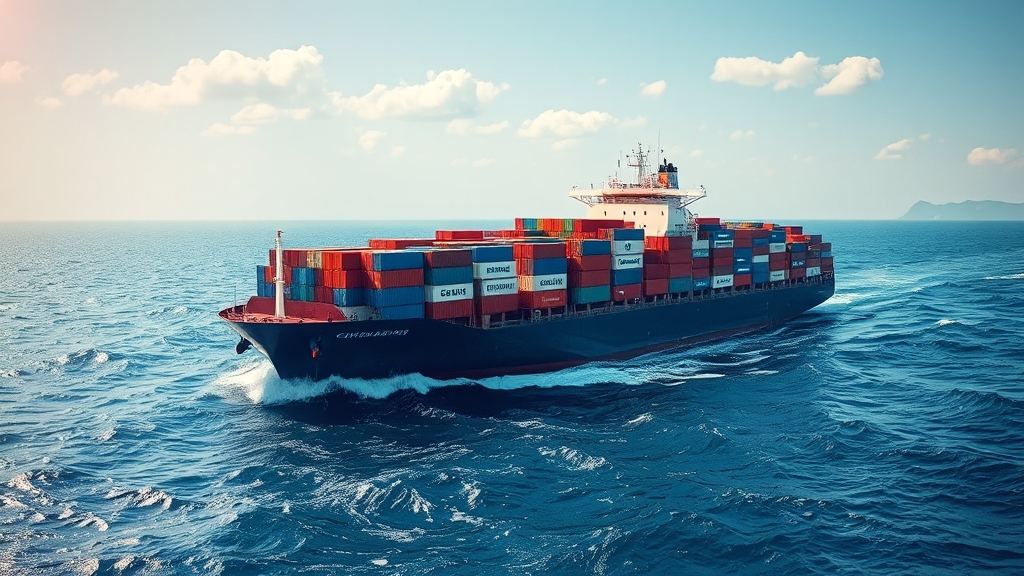
Understanding Container Shipping Costs from China to Mexico
Container shipping costs from China to Mexico can vary significantly based on numerous factors. Understanding these costs is crucial for importers looking to budget effectively for their shipments. A comprehensive grasp of logistics can help you make informed decisions, optimizing your shipping process and reducing expenses. The shipping industry is known for its complexity, and being aware of the various elements that affect costs can provide a competitive edge.
In 2023, the global shipping landscape has seen fluctuations due to factors such as the ongoing effects of the COVID-19 pandemic, geopolitical tensions, and changes in international trade regulations. For instance, according to the World Bank, average global shipping costs have increased by around 10% since 2022, making it essential for importers to stay informed about current pricing trends and to partner with a reliable freight forwarder like Dantful International Logistics to navigate these complexities.
Key Factors Influencing Shipping Costs
Shipping Route and Distance
The shipping route plays a pivotal role in determining shipping costs. The primary route from major Chinese ports like Shanghai, Shenzhen, and Ningbo to Mexican ports such as Manzanillo and Veracruz can impact transit times and costs. Generally, shorter routes may lower costs, while longer distances can lead to increased fuel expenses and transit times. For example:
| Route | Distance (Approx. km) | Estimated Transit Time (Days) |
|---|---|---|
| Shanghai to Manzanillo | 19,000 | 25-30 |
| Shenzhen to Veracruz | 20,500 | 30-35 |
| Ningbo to Manzanillo | 19,500 | 25-30 |
As illustrated in the table, the distance and logistics involved in each shipping route will affect the overall shipping costs.
Container Size: 20ft vs. 40ft
The size of the container also significantly impacts shipping costs. The choice between a 20ft container and a 40ft container may depend on the volume of goods being shipped.
20ft Container: Suitable for smaller shipments, often more economical if you have less cargo. However, shipping a 20ft container may not be the most cost-effective option if your shipment volume approaches the limits of a 40ft container.
40ft Container: Perfect for larger shipments, offering more space and potentially lower costs per unit of cargo. Shipping costs per cubic meter are generally lower with a 40ft container compared to a 20ft container.
| Container Size | Capacity (CBM) | Average Shipping Cost to Mexico (USD) |
|---|---|---|
| 20ft | 28 | $1,500 – $2,000 |
| 40ft | 56 | $2,800 – $3,500 |
As you can see, the 40ft container often provides a better value for larger shipments, making it a popular choice among businesses importing from China.
Mode of Transport: FCL vs. LCL
The mode of transport significantly influences shipping costs. There are two primary methods of shipping containers: Full Container Load (FCL) and Less than Container Load (LCL).
FCL: This method is generally more cost-effective for larger shipments that can fill an entire container. FCL provides more control over schedules and reduces the risk of damage, as the goods remain within one container from origin to destination.
LCL: Ideal for smaller shipments, LCL allows multiple importers to share space in one container. While this can save costs for smaller shipments, it might lead to increased handling fees and longer wait times due to consolidation.
| Shipping Mode | Cost Efficiency | Average Shipping Cost (USD) |
|---|---|---|
| FCL | Higher for large shipments | $2,800 – $3,500 for 40ft |
| LCL | Higher for smaller shipments | $250 – $700 per CBM |
Choosing between FCL and LCL depends on the nature of your shipment. Understanding these factors is essential for making cost-effective and timely shipping decisions.
By working with a professional freight forwarder like Dantful International Logistics, you can receive tailored advice on optimizing your shipping strategy, ensuring that you make the best choice for your unique shipping needs.
READ MORE:
- Shipping From China to the USA
- Shipping From China TO Canada
- Shipping From China TO Mexico
- Shipping From China to Panama
- Shipping From China to Costa Rica
- Shipping From China to Brazil
- Shipping From China TO Colombia
- Shipping From China to Jamaica
- Shipping From China to Venezuela
- Shipping From China to Argentina
Shipping Costs for Containers from China to Mexico
When considering container shipping costs from China to Mexico, it is essential to evaluate the specific expenses associated with different container sizes and shipping methods. Below is a detailed breakdown of the costs involved.
20 ft Container Shipping Cost from China to Mexico
The shipping cost for a 20 ft container from China to Mexico generally falls within the range of $1,500 to $3,000 depending on various factors such as the shipping route, the freight forwarder, and the time of year.
Cost Breakdown for 20ft Containers
| Item | Estimated Cost (USD) |
|---|---|
| Base Freight Charge | $1,200 – $2,500 |
| Port Fees | $100 – $300 |
| Customs Clearance Fees | $200 – $500 |
| Insurance (optional) | $50 – $150 |
| Total Estimated Cost | $1,500 – $3,000 |
This breakdown provides a comprehensive view of the likely costs associated with shipping a 20 ft container. It is advisable to consult with a reliable freight forwarder like Dantful International Logistics, which offers cost-effective solutions and high-quality service.
40 ft Container Shipping Cost from China to Mexico
Conversely, the cost for shipping a 40 ft container can be slightly more economical in terms of cost per cubic meter, generally ranging from $2,500 to $4,500.
Cost Breakdown for 40ft Containers
| Item | Estimated Cost (USD) |
|---|---|
| Base Freight Charge | $2,000 – $3,800 |
| Port Fees | $150 – $350 |
| Customs Clearance Fees | $300 – $700 |
| Insurance (optional) | $100 – $250 |
| Total Estimated Cost | $2,500 – $4,500 |
Depending on the volume and nature of your cargo, opting for a 40 ft container might provide better value, particularly when transporting large quantities of goods.
Comparison of FCL and LCL Shipping Costs
When shipping from China to Mexico, you have two main shipping methods: Full Container Load (FCL) and Less than Container Load (LCL). Here’s a quick comparison:
| Shipping Method | Description | Estimated Cost (USD) |
|---|---|---|
| FCL | Entire container is used by one customer. | 20ft: $1,500 – $3,000 <br> 40ft: $2,500 – $4,500 |
| LCL | Multiple customers share the container space. | Estimated at $100 – $200 per cubic meter + handling fees |
Choosing either FCL or LCL depends significantly on your shipping needs. For larger shipments, FCL might be more cost-effective, while LCL is beneficial for smaller volumes.
Additional Fees and Charges
In addition to the base shipping costs, there are additional fees and charges that importers must consider when shipping containers from China to Mexico.
Port Fees and Handling Charges
Port fees can vary by port of departure and arrival. Generally, these fees cover the costs related to the loading and unloading of containers at the port. On average, port fees can range from $100 to $500, depending on the port and services utilized.
Customs Duties and Taxes
Upon arrival in Mexico, all imported goods are subject to customs duties and taxes. The rate varies based on the type of goods being imported but typically ranges from 5% to 20% of the goods’ declared value. It is crucial to work with experienced customs brokers to ensure accurate valuation and compliance with Mexican customs regulations.
By understanding the various components of shipping costs, along with additional fees and charges, importers can make informed decisions that enhance their shipping efficiency and cost-effectiveness. For tailored solutions and expertise, consider partnering with Dantful International Logistics, your trusted freight forwarder for seamless shipping from China to Mexico.
Shipping Time from China to Mexico
Average Transit Times for Sea Freight
The shipping time from China to Mexico via sea freight can vary significantly based on several factors, including the shipping route, port of departure, and the destination port. Generally, the average transit time for container shipping between these two regions is approximately 20 to 35 days when using standard ocean freight services.
For instance, shipping from the major Chinese ports such as Shanghai or Shenzhen to Manzanillo or Veracruz can take around 25 to 30 days. Meanwhile, shorter routes may result in quicker delivery times, while more complex logistics or additional transshipment points can extend the duration. Here’s a concise table illustrating the average transit times to major Mexican ports:
| Departure Port | Destination Port | Average Transit Time |
|---|---|---|
| Shanghai | Manzanillo | 25-30 days |
| Shenzhen | Veracruz | 30-35 days |
| Ningbo | Altamira | 28-33 days |
| Guangzhou | Progreso | 30-35 days |
These times are estimates and can be influenced by the shipping line, weather conditions, and port operations.
Factors Affecting Shipping Duration
Several factors can impact the shipping duration from China to Mexico:
Port Congestion: Busy ports may experience delays due to congestion, which can hinder loading and unloading operations.
Customs Clearance: The efficiency of customs processing at both the origin and destination can significantly affect shipping times. Proper documentation and compliance with regulations can expedite this process.
Weather Conditions: Adverse weather can disrupt shipping schedules, causing delays in transit times.
Shipping Line Schedule: Different shipping lines have varying schedules and frequencies, which can impact how long it takes for a container to reach its destination.
Transshipment: If the shipping route involves transshipment (changing vessels at an intermediate port), it can add extra time to the overall shipping duration.
By understanding these factors, importers can better anticipate shipping times and plan their logistics accordingly.
Tips for Reducing Container Shipping Costs
Choosing the Right Freight Forwarder
Selecting the right freight forwarder can have a significant impact on your shipping costs. A professional and cost-effective freight forwarder, such as Dantful International Logistics, can provide tailored solutions that meet your specific needs. Here are some tips:
Experience and Network: Choose a forwarder with extensive experience in shipping from China to Mexico who has established relationships with shipping lines and port authorities. This can lead to better rates and more efficient services.
Service Offerings: Look for a one-stop logistics provider that can offer a range of services, including Ocean Freight, Air Freight, Customs Clearance, and Door to Door services, to simplify your shipping process.
Transparent Pricing: Ensure the forwarder provides clear quotes detailing all costs involved, allowing you to make informed decisions.
Consolidating Shipments for Cost Efficiency
Consolidating shipments is a strategic way to reduce costs when importing goods from China to Mexico. Here’s how it can work to your advantage:
Full Container Load (FCL) vs. Less than Container Load (LCL): If you have enough goods to fill an entire container, opting for FCL is usually more cost-effective than LCL, where you share space with other shipments. However, if your shipment is smaller, consolidating with others can save you money.
Booking Regular Shipments: If feasible, plan to consolidate multiple smaller shipments into one larger shipment on a regular basis. This can lead to lower overall shipping costs and more efficient logistics management.
Using a Freight Forwarder for Consolidation: A reliable freight forwarder, like Dantful International Logistics, can facilitate the consolidation process, ensuring that your goods are shipped together, thereby maximizing space and minimizing costs.
By implementing these strategies, importers can manage their shipping expenses more effectively while ensuring their goods arrive promptly and safely.

Young Chiu is a seasoned logistics expert with over 15 years of experience in international freight forwarding and supply chain management. As CEO of Dantful International Logistics, Young is dedicated to providing valuable insights and practical advice to businesses navigating the complexities of global shipping.





